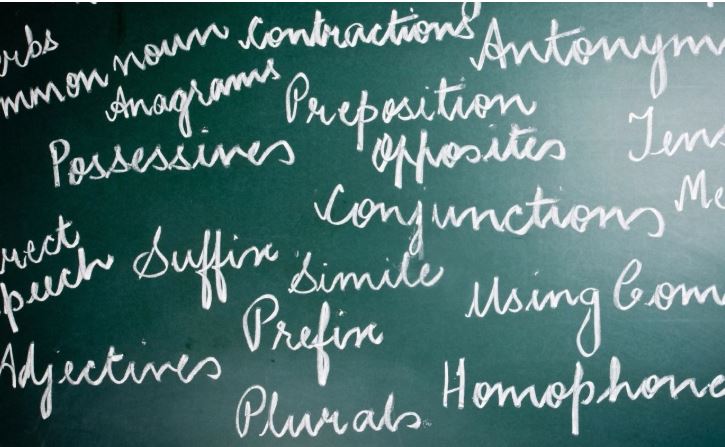How to identify a noun

Always wanted to improve your English grammar and English writing skills? With Marion Field’s book, there are lots of exercises to help you learn all the basics to improve your written skills (which is especially good if you read English as a foreign language). Result!
What is a noun?
A noun is the name of a person, place or thing. There are four types of noun: concrete, proper, collective and abstract.
What is a concrete noun?
This is a physical thing – something you can see or touch.
Here are a few examples:
Apple
Key
Umbrella
Cat
Lake
Dog
Needle
Soldier
Watch
Garage
Orange
Tin
What is a proper noun?
A proper noun always begins with a capital letter. It is the name of a person, a place or an institution. Here are a few examples:
Alistair
Bob
Christopher
England
Hampton Court
River Thames
The Royal Navy
Proper nouns and adjectives formed from proper nouns always start with a capital letter; for example, the days of the week and the months of the year.
Proper nouns: Adjectives
America: American
Austria: Austrian
England: English
What is a collective noun?
A collective noun refers to a group of objects, animals or people. It is a singular word but most collective nouns can be made plural. Here are a few examples:
Singular: Plural
Choir: Choirs
Flock: Flocks
Herd: Herds
Orchestra: Teams
What is an abstract noun?
An abstract noun cannot be seen or touched. It can be a feeling, a state of mind, a quality, an idea, an occasion or a particular time.
Here are a few examples:
Anger
Month
Peace
Night
Health
Darkness
Patience
Happiness
Pregnancy
Sometimes abstract nouns can be formed from adjectives by adding ‘ness’ as a suffix.
Adjectives: Abstract Nouns
Bright: Brightness
Dark: Darkness
Kind: Kindness
Ill: Illness
What is a subject?
A sentence must contain a subject. This is the main noun or pronoun in the sentence and performs the action.
For example:
Fiona was very tired. (Fiona is the subject of the sentence).
What is an object?
This is usually a noun or pronoun, which is usually near the end of the sentence. However, unlike a subject, a sentence does not have to contain an object.
For example:
The footballer kicked the ball into the net. (The object of the sentence is ball).
What is a pronoun?
To keep repeating the same noun in a sentence, pronouns can be used instead.
What is a personal pronoun?
A personal pronoun takes the place of a noun and is identified as 1st, 2nd or 3rd person. They can also be used as both the subject and object.
What is a demonstrative pronoun?
Nouns can also be replaced with demonstrative pronouns.
Examples are: Singular – this, that Plural – these, those
This is not interesting That is not right
These are expensive Those look delicious
What is an interrogative pronoun?
These are used to ask questions and asked at the start of the sentence. The sentence in which they are used must contain a question mark.
Some examples are below:
Which do you take?
Who is moving into that house?
Whose is that pencil?
For more ways to master the essentials of grammar, punctuation and spelling, read Improve Your Written English (Rightway) by Marion Field


